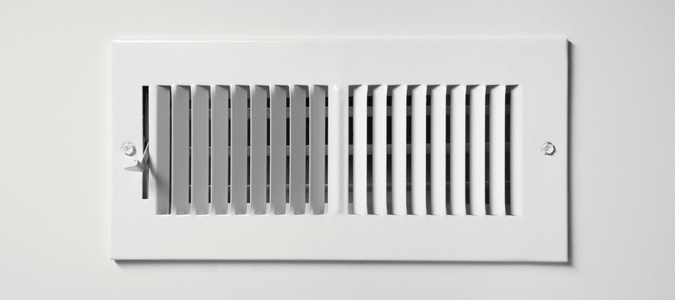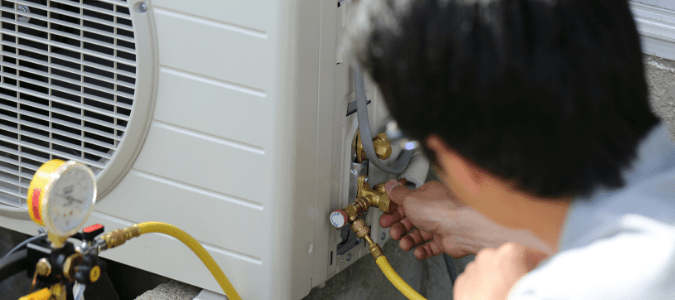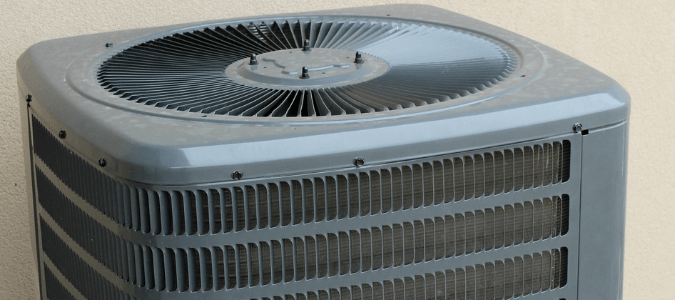If you’re having repeated issues with your AC capacitor, you may be wondering, “why does my AC capacitor keep going out?” The capacitor is one of the most vital components of an air conditioning system, providing the motor with bursts of energy when needed. Unfortunately, it is also the most prone to breakdowns, especially under a heavy workload.
If you have been experiencing problems with your capacitor, we will review some possible reasons why it could be acting up. We also cover how capacitors work and how you can check yours at home. However, it can be complicated to fix it yourself. It is best to contact an HVAC professional to do the job for you.
Most Common Reasons for AC Capacitor Failure
Capacitors have a tough job, making them prone to wear and tear. It’s not unusual for an AC’s capacitor to break down, requiring more repairs than other parts. Here are the most common reasons why AC capacitors fail.
The Parts Are Worn or Damaged
Capacitors have to take a break every few seconds to prevent overheating. But if the fan motor or compressor drags because they are worn out or damaged, it can cause the capacitor to become too hot. A faulty relay switch can also leave the capacitor running too long, causing it to overheat.
There Is Excessive Exposure to Heat
Capacitors are heat-sensitive, so they’re usually deep within the body of an air conditioning unit. Excessive heat can cause them to lose their ability to hold an electric charge, affecting their efficiency. It can also shorten their life span and cause them to fail. Technicians will usually tell you to replace your capacitor when this happens. To prevent heat exposure, keep your AC unit in a shaded spot. In addition, make it a habit to replace the filter so hot air doesn’t get trapped inside.
There Is an Electrical Overload
An AC capacitor powers the fan motor and compressor about three-quarters of the way. It will then disengage, as it shouldn’t run for long periods. But if there is a physical blockage in the motor, it can cause an electrical overload and destroy the capacitor. Lightning strikes and other power surges can also fry the capacitor.
The Voltage Is Too High
There are many kinds of AC capacitors. If you’re having your current one replaced, make sure that the new capacitor’s specifications match the old one. If it is undersized, it will be taking on a job that is too big to handle, which can significantly lower its life span. A voltage that exceeds the rated value is destructive to a capacitor, even a small power surge.
A telling sign that it is time to put your capacitor to rest is when you’re getting higher electricity bills. A failing capacitor will work much harder to do its job and use more energy. Other clues are if your AC is making noise, blowing warm air or you are having difficulty turning it on. If you are experiencing any of these problems, contact an HVAC specialist. They will examine your AC thoroughly and provide you with a solution.
How Does a Capacitor Store Energy?
If you are struggling to understand the science behind a capacitor, you can liken it to the concept of gravity. When climbing a flight of stairs, every step is a “pushing” action against gravity’s “pulling” action. You’re exerting energy against the force of gravity so you can get to the top. This energy doesn’t disappear but will become stored energy in your body, known as gravitational potential energy. It’s the energy an object acquires because of its location in the gravitation field.
Something similar goes on inside a capacitor. It has two plates with a positive and negative electrical charge. And in between them is an insulating material called a dielectric. Similar to how the earth drags your body down, these opposite electrical charges attract each other. And when you pull these positive and negative charges apart, energy is produced and stored between the capacitor’s plates as electrical potential energy. That is how capacitors provide an energy surge when you turn on the AC.
To help you better visualize a capacitor, you can think of it as an ice cream sandwich. The outer “wafers” are the two conducting plates with opposite electrical charges. And the ice cream in between is the dielectric. The plates can be any metal. Meanwhile, the dielectric can be rubber, ceramic, paper or glass. The plates are parallel and close to each other, but the dielectric prevents them from touching. Two external terminals join these plates to the circuit.
Because capacitors have an electrical field stored inside them, you should not attempt to fix or replace them yourself. Let an HVAC specialist do the job safely.
How to Check the Air Conditioning Capacitor
You should contact an HVAC specialist if you are having capacitor problems. There are some tests a professional will run to confirm that your capacitor isn’t functioning as it should.
Before doing anything, they will discharge your capacitor using a bleeder resistor. This is a necessary step because capacitors hold onto their charge even if the power supply is off. There is potential for an electric shock if you accidentally touch it without discharging it. Once that’s out of the way, the professional can check your AC’s capacitor through the following methods.
Multimeter Using Capacitance Setting
A digital multimeter offers one of the fastest and easiest ways to test a capacitor. Your AC professional will check that your multimeter has a capacitance setting, a feature most middle and high-end models sport. Then, they will do the following:
- Check if the capacitance rating is visible on the capacitor and take note of it. Manufacturers usually print it on the body, along with the voltage rating.
- On the digital multimeter, change the setting to capacitance measurement.
- Attach the multimeter’s probes to the capacitor’s terminals and check the digital multimeter’s reading.
- If the reading is close to the value indicated on the capacitor, it is working well. But if there’s a significant difference, it is time to replace your capacitor as it is not functioning anymore.
Multimeter Without a Capacitance Setting
If your multimeter has no capacitance setting, they can still test your capacitor by following these steps:
- Select the resistance setting on your multimeter.
- Attach your capacitor’s leads to the multimeter’s probes and take note of the reading.
- Disconnect the capacitor from the multimeter and repeat the test a few more times.
- If the measurements are close to each other, you have a functioning capacitor. But if the values don’t change, it is time to replace your capacitor because your current one is faulty.
Voltmeter
Your professional can also test your capacitor’s voltage rating to see if it functions well. They will use a voltmeter for this method. Here are the steps involved:
- Look for the printed maximum voltage rating on your capacitor. It can be 16 volts, 25 volts, 50 volts and so on.
- Attach the capacitor’s leads to a power supply. Make sure the applied voltage is less than the capacitor’s maximum tolerance. For example, your professional could use 9 volts for a 16-volt capacitor.
- Charge the capacitor for five seconds and disconnect it from the power supply.
- Connect the capacitor to the voltmeter’s terminals and check the reading. Your capacitor is in good condition if the value is close to the indicated maximum voltage. But if the numbers are too far apart, you have a faulty capacitor.
If your AC capacitor is failing, contact an HVAC specialist. They will come get your AC back up and running in no time!
ABC Can Maintain Your AC System
Dealing with an air conditioner capacitor that isn’t working properly can be frustrating and even dangerous. If you’re looking for a professional to fix any aspect of your air conditioner, contact ABC Home & Commercial Services. Our HVAC professionals can deal with a broken AC, ensure that your system works as it should and we will catch any needed AC repairs early.



